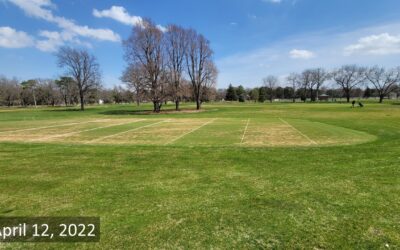GREENKEEPER BLOG
Cold Spring Weather Wreak Havoc on Spray Programs
Spring can be a frustrating season for many in the golf industry. Golfers, Club Professionals, GMs, and owners want to escape the winter doldrums and return to their predestine golf courses with firm and fast conditions. Unfortunately, the weather doesn't always...
Winterkill Recovery Techniques
There are more reports of turfgrass winterkill from around the US. At first, we thought most of the damage was limited to winter desiccation in the Central Great Plains. Unfortunately, we've received reports from coast to coast. Zac Reicher, PhD from Bayer...
P is for Purple
Last spring, a handful of the research putting green plots at OJ Noer at the University of Wisconsin-Madison were showing some pretty impressive signs of phosphorus deficiency. The OJ Noer research facility gives us the opportunity to push grass to its limits. About...
Don’t Let the Tail Wag the Dog
Many factors influence turfgrass growth rate. Some are beyond the manager's control while others are frequently manipulated through normal management. Environmental factors including the recent weather and soil conditions, turfgrass genetics, traffic levels and even...
Invest in Yourself & Your Staff this Off-Season
Labor shortages continue to be a major threat to the turf management industry. Field managers, golf course superintendents, and LCOs from around the country have struggled to find and retain qualified turfgrass professionals at all levels. Many managers have to...
Moving Beyond PGR GDD Intervals
For nearly 15 years, Dr. Doug Soldat and I have been creating growing degree day (GDD) models for plant growth regulators (PGRs) and now DMI fungicides. These sinewave shaped models predict how these routinely applied products affect the relative growth rate of...






